Well then. Happy New Year everyone, even though we're almost a week into 2016 now and things are starting to return to normal. I've been distracted by AGDQ all week, as I'm sure have many of you, and by Fallout 4 which has now supplanted my weekly allotment of wiki work (try saying that three times fast) as the activity I busy myself with as I listen to podcasts. However, though my current work has stalled, briefly before starting all the Go! Go! GOTY content last month I managed to spruce up the wiki pages for every Japanese HuCard game released on the NEC PC Engine in 1989. This is an extension of the previous wiki work for the TurboGrafx-16 - the PC Engine's "brash and extreme" US counterpart.
The PC Engine was a far bigger force in its native Japan, ushering in the 16-bit console era in late 1987 and ably keeping up sales-wise with its Sega Mega Drive and Super Famicom rivals for a time. As a result, even though I'm only focusing on Japan-exclusive HuCard releases - the PC Engine was also capable of CD format games - we still saw a veritable rush of titles released for the system between 1989 and 1995, at which point it joined its two 16-bit rivals in obsolescence in the advent of the mighty Sony PlayStation and slightly less mighty Sega Saturn. After I finish up the PC Engine's 1990, which I'm midway through as of writing, I'm hoping to alternate between individual years on the SNES/Super Famicom and the PC Engine going forward for a bit of variety.
As with previous recent Wiki Projects, I've put up a list of what I subjectively consider the "most interesting" games for the system released during 1989. These won't be like the Super Nintendo highlights, which combined famous SNES games along with weird obscurities, because I doubt any of these have a whole lot of exposure outside of Japan (or other internet venues that show off PC Engine games, like the ObscureVideoGames Tumblr, The Brothers Duomazov, Magweasel's I <3 The PC Engine or Chronturbo). I know almost all of them were surprises to me as I put together the various screenshots and research to build their pages. I've also followed that list up with a special list named "Why Was This Not a Thing?" for the various games that would've really helped the struggling US version of the console gain some traction. These are ports of games US audiences will have already been familiar with due to releases elsewhere, and while they aren't all excellent ports of excellent games I don't doubt they would've shifted some inventory due to name recognition. Whether it's due to international licensing issues or lack of localization support and funding, though, they remained Japan exclusives.
Top Ten
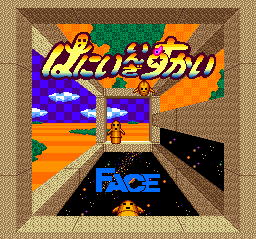 | Hani in the Sky: The PC Engine didn't hurt for inventive shoot 'em ups, and while most PCE owners would be set with Hudson's Star Soldier or Gunhed (a.k.a. Blazing Lazers) there were a few oddities of note for those seeking something off the beaten path of regular old spaceships and pyrotechnics. FACE's vertically scrolling shoot 'em up features as its protagonist one of those haniwa statues: the expressive clay models that would later inspire Final Fantasy's Cactuars and the Gyroids of Animal Crossing. Hani had a multi-directional cannon that the player had to manually move into position before firing: sort of like Capcom's Forgotten Worlds. It's not an easy game either, but then that's every shoot 'em up when you're as bad at them as I am. (3/1/1989.) |
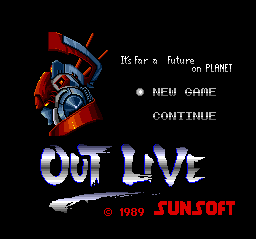 | Out Live: Out Live is a traditional first-person dungeon-crawling RPG, but instead of strolling past mildewy stone walls as a barbarian, the player is flying down octagonal space corridors in a fully-equipped mech suit. Beyond that it's a fairly basic interpretation of this venerable model that began way back in the 70s with the earliest Wizardry precursors. Explore mazes making your own maps to avoid confusion, fight monsters, earn XP and gold, buy better equipment, repeat until the game ends. But hey, how often do you get to be in a mech for one of these? (3/17/1989.) |
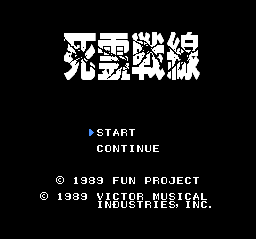 | Shiryou Sensen/War of the Dead: Venerated alongside the Famicom action game Sweet Home as the origin of the survival horror genre, which became a significant seller between the mid-90s and mid-00s thanks to big names like Resident Evil and Silent Hill, the initial release Shiryou Sensen (or War of the Dead) actually predates the Famicom spookfest by a couple of years. It first hit the MSX in 1987, eventually leading to this PC Engine port two years later. It balances an open-world top-down world with 2D side-scrolling sequences, not unlike Zelda 2, and focuses on zombie apocalypse survivor and US Army "paranormal agent" Lila as she scours a monster-filled town for supplies and ammo while rescuing whomever she can. Ammo conservation and avoiding risky encounters are key here as there is no "experience" for winning battles and ammo and health are forever in finite supply, as would be the case for Resident Evil and the bevvy of survival horror games to follow. An important game for history buffs and genre fans, then, and the PC Engine port is by most accounts a fairly polished rendition. (3/24/1989.) |
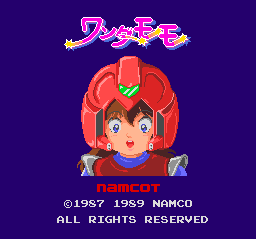 | Wonder Momo: Wonder Momo is one of Namco's more enduring properties from this era, and the last 8-bit game they produced for the Arcade, but the scantily-clad tokusatsu heroine didn't get much play outside of Japan. Possibly because of the difficulties of selling a game with a female protagonist, but probably because the game is very invested in its uniquely Japanese aesthetic: Wonder Momo is not only a superhero, but an actress pretending to be a superhero as she fights not only fictional villains and monsters but the occasional rabid fan who tries to interrupt her performance with upskirt flash photography. It's a meta twist on a superhero game's presentation, one that would be mirrored in other games like Super Mario Bros. 3 with its theater surroundings. (4/21/1989.) |
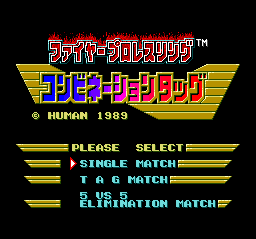 | Fire ProWrestling Combination Tag: Human Entertainment's long-running Fire ProWrestling franchise probably doesn't need an introduction, but it got one with Combination Tag - the first Fire ProWrestling game ever made. Almost every Fire ProWrestling would follow the blueprint of Combination Tag with its isometric rings, fictional yet familiar wrestling talent and the irksome if not mystique-building Japan-only exclusivity. I'm no fan of wrestling, but FirePro shows up so often when I'm working on the PC Engine and Super Nintendo that I've gained some measure of respect for the whole enterprise. I still suck at them though - it's not your everyday button-mashing wrestling game. (6/22/1989.) |
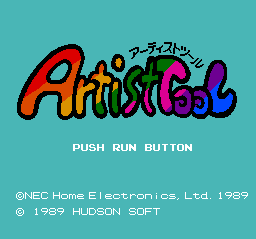 | Artist Tool: Not so much a game than the PC Engine's take on Mario Paint with about three different peripherals that were sold separately that could be connected to it: a graphics tablet, a printer and a scanner. It didn't do particularly well because it was surprisingly barebones given how much yen you needed to drop on it and its accoutremonts, and thus they all fetch insane prices on the collector's market. (9/29/1989.) |
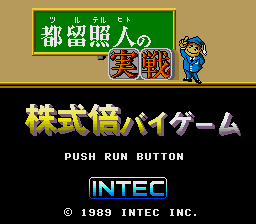 | Tsuru Teruhito no Jissen Kabushiki Bi-Game: A crazy name for a very mundane game, Tsuru Teruhito no Whatever is a stock trading game similar to Wall Street Kid. The Japanese put a lot of stock into stock market simulation games, either to train their kids to become savvy traders or to appeal to adults who, naturally, leave the dragons and laser swords of their youths behind for cold, hard commerce and portfolio-building. The title of the game includes the words "practice stocks", so perhaps it's intended to train you for the real thing. (11/10/1989.) |
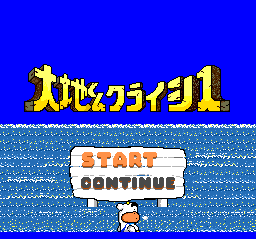 | Daichikun Crisis: Do Natural: A wholly original idea for a game, the player controls a family of farming bears as they attempt to take back their island from volcanoes and the vicious creatures that dwell within. As well as running around cleaning up the ash to make the land arable again, the player is also planting and harvesting crops to export. The seasons cycle quickly in real-time, so the player has to make sure they're working with the right crops at any given moment. It feels like a mix of Harvest Moon and the top-down parts of ActRaiser as you alternate farming and fighting. (11/22/1989.) |
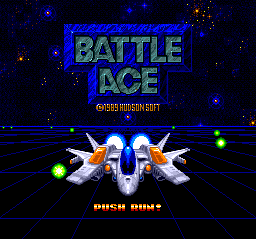 | Battle Ace: While a fairly generic first-person After Burner clone, Battle Ace is notable for being the first game released for the SuperGrafx console. The SuperGrafx, as Wikipedia tells us, was meant to be the PC Engine's eventual successor but failed to deliver on that front, instead offering only a larger amount of RAM and an enhanced graphics card that allowed for parallax scrolling among other improvements. It certainly wasn't a sufficient boost for the hefty price tag it demanded, and would only see a handful of games that took advantage of the tech before NEC and Hudson abandoned it. It was, however, still compatible with all the standard PC Engine HuCards game and the PC Engine CD games released up to 1990, so it wasn't a complete wash. Battle Ace is the first of those SuperGrafx exclusives but I doubt it convinced many people to buy the new system. (11/30/1989.) |
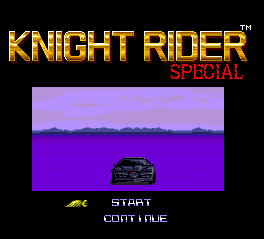 | Knight Rider Special: That's right, Japan saw a PC Engine adaptation of the famous 80s TV show with the talking car. The player, as Michael Knight, chases bad guys down in the hi-tech KITT vehicle, using its turbo boosters to quickly catch up and run them off the road Chase HQ style. It's similar to the Famicom game by the same developers - which was also Japan-only - but had better graphics, various improvements and additional features, hence the "Special". (12/22/1989.) |
Why Was This Not A Thing?
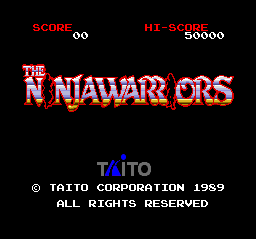 | The Ninja Warriors: The PC Engine had a half-decent version of Taito's cybernetic ninja take on Rush'N Attack, so it's a mystery why they didn't bring it over. Couldn't really go wrong with ninjas in the late 80s. (6/30/1989.) |
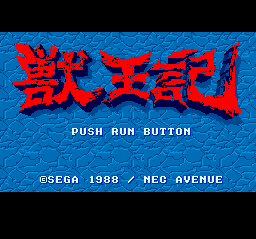 | Juuouki/Altered Beast: I can kinda see why this might not have crossed over: Sega probably wanted a regional lockdown for this and their other Arcade games for their fledgling Sega Genesis system. Probably for the best, because even though the CD version of the PC Engine Juuouki has some neat music and cutscenes, it doesn't play well with its laggy animations. It's not like Altered Beast is all that great to begin with. (9/29/1989.) |
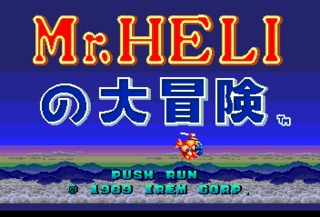 | Mr Heli no Daibouken: Mr Heli isn't the first Irem Arcade action game that comes to mind, but it did get a number of quickie home computer ports in the US and Europe shortly after its original release. The player, as the eponymous sentient helicopter, flies and runs across colorful worlds destroying bricks to free valuable crystals in what looks a little like a side-scrolling version of Konami's TwinBee. (12/1/1989.) |
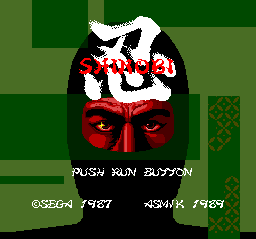 | Shinobi: Possibly in the same boat as Altered Beast, Sega allowed their timing-heavy ninja rescue game to see a PC Engine release. It saw numerous home computer ports in Europe and the US, but the TurboGrafx had to go without. (12/8/1989.) |
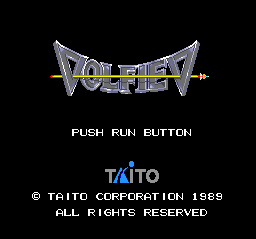 | Volfied: Volfied might not ring a bell, but its US Genesis name Ultimate QIX ought to. It's the second sequel/enhanced remake of Taito's box-drawing wireframe Arcade classic QIX and would be an easy sell for the TurboGrafx as "Turbo QIX" if NEC had their druthers. (12/27/1989.) |
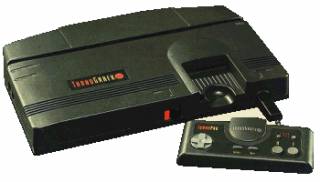
Log in to comment